THE LAST MAN ON THE MOON . Copyright 1999 by Eugene Cernan and Don Davis. All rights reserved. Printed in the United States of America. For information, address St. Martins Press, 175 Fifth Avenue, New York, N.Y. 10010.
Cernan, Eugene.
The last man on the moon: astronaut Eugene Cernan and Americas race in space/Eugene Cernan and Don Davis.lst ed.
p. cm.
Includes index.
ISBN-13: 978-0-312-19906-7
ISBN-10: 0-312-19906-6
1. Project Apollo (U.S.)History. 2. Space flight to the moonHistory. 3. Space race
History. 4. Cernan, Eugene. I. Davis, Don (Donald) II. Title.
Contents
1
Fire on the Pad
2
Taps
3
Sold by the Nuns
4
Wings of Gold
5
Albino Angels
6
Two Commander Shepards
7
Max and Deke
8
Any Astronauts Around Here?
9
The Suit
10
Crash
11
The Mayor of Pad 19
12
The Angry Alligator
13
The Spacewalk from Hell
14
Redemption
15
Annus Horribilis
16
Phoenix Rising
17
The Magnificent Beast
18
Burn, Baby, Burn
19
There Is No End
20
Hauling the Mail
21
The Gamble
22
The Ice Commander
23
Secret Mission
24
Beep, Beep
25
Fire and Water
26
Dr. Rock
27
I Cant Walk!
28
Top of the Pyramid
29
Falling to the Moon
30
Down in the Valley
31
The Search
For many years, I have wanted to write a book for my grandchildren. I wanted Ashley, Carson, Kaylee, Katelyn, Whitney and those yet unnamed who are sure to follow to hear from me this story of what it was like to live out a dream, with the hope that someday they might understand their grandfather a little better. And I wanted to create something special for the many, many people who helped to reach the Moon, for without their commitment, dedication, and personal self-sacrifice, I would never have been able to reach so far, nor would I have had the opportunity to share my story. Although it would be impossible to name them all, I am deeply grateful to each of them.
I want to thank those who critiqued various parts of this manuscript during the many preliminary drafts, particularly my peers, whose insights were invaluable. I hold them all in the greatest esteem. In addition, I will always treasure my friendship with Deke, Al, Roger, and Ron, who, while they were with us, played such significant roles in my life.
Special thanks to my agent, Jane Dystel and her staff, and my editor, Charlie Spicer and the team at St. Martins Press, who believed in this project, made it happen, then improved it. And to Don and Robin Davis, my co-conspirators, without whom I could never have done it.
Most importantly, I want to thank my family and close friends, whose support and help was so important throughout this long project. Mom and Dad were with me in spirit every step of the way. Dee and Jim gave safe haven while providing background about our growing-up years. Barbara Cernan dug deep into the past to help recall and document long-ago events. Martha Chaffee painfully recalled her familys story and gave reassurance during critical moments. Max Ary, Norma Van Bunnen, and the staff at the Kansas Cosmosphere and Space Center lent timely and invaluable assistance, uncovering documents and film that had lain unseen for more than a quarter of a century. Skip Furlong, Fred Baldwin, and Tom and Carol Short helped steer the story through our early years together. Claire Johnson somehow survived the writing and publishing ordeal with her usual charm and efficiency.
My daughters Tracy, Kelly, and Danielle were a wealth of encouragement when the task seemed insurmountable, and the end of the book was nowhere in sight.
A simple thank you does not seem enough for my wife, Jan, who endured the difficult months of my reliving a life of which she was not a part. Her love and understanding made it all possible.
And to everyone who helped put American astronauts on the Moon, where ever you are today, I salute you.
Eugene A. Cernan
Houston, Texas
September 1998
1
Fire on the Pad
F RIDAY , J ANUARY 27, 1967, was another balmy southern California winter day with temperatures in the low seventies, but a blizzard might as well have been hammering the North American Aviation plant in Downey. Inside the altitude chamber, where Tom Stafford, John Young and I were buckled into a titanium container not much larger than a kitchen table, there wasnt any air, much less any weather. Time, not snowfall or sunshine, was our concern. The most experienced astronaut crew in the U.S. space program, with five completed missions between us, we were trying to bring a new, untried and stubborn spacecraft up to launch standards, and we werent having much success.
On the other side of the United States, in Floridas afternoon sunshine, three of our fellow astronauts were conducting similar tests in an identical spacecraft perched atop a giant Saturn 1-B rocket at Cape Kennedy. The world knew Gus Grissom, Ed White, and Roger Chaffee as the crew of Apollo 1, and they were scheduled to lift off in less than a month. They werent having much luck either.
The days of the one-man Mercury missions seemed like distant history, and the two-man Gemini series had proven we could walk in space, rendezvous, and endure long flights. Now the time had come for the start of Apollo, the gigantic undertaking that would realize President Kennedys dream of putting an American on the Moon, and bringing him back alive, by the end of the decade.
My gut feeling as a test pilot was that as badly as the program needed this flight, the bird simply wasnt ready. In fact, I was amazed that we were so far along the path toward launch with so many things still going wrong. Before Apollo could fly, tens of thousands of parts in both the rocket and spacecraft had to work flawlessly, and so far, they hadnt. But the damned Russians were breathing down our necks, and we were going to force that spacecraft to do what it was supposed to do, even if we had to bend some mechanical and physical laws through sheer willpower. Despite the problems, all signals remained go for Apollo 1
In Florida, the prime crew was atop an empty rocket for what was called a plugs out test, which meant that everything was being run as it would be for a real mission, except the Saturn was not fueled. In California, our crew was in a duplicate spacecraft in the middle of a chamber that simulated the vacuum of outer space. The cone-shaped command module had given fair warning that this was not going to be a good day even before I climbed aboard. The forty-pound hatch fell on my foot and I could have sworn the bird had dropped it on purpose, part of its evil plot to keep me, Gene Cernan, from ever flying in space again.
I wormed in through the small hatch, slid onto the middle canvas couch, then moved over to my own position on the right side of the crew compartment. Although spacious in comparison to the tiny spacecraft of Mercury and Gemini, there still wasnt much room in Apollo, and I carefully eased my feet down among a clutter of unprotected bundles of wires. A technician helped buckle me in and attach the hoses to my suit, then the radio in my helmet came alive with a burst of static. While waiting for the others to climb in, I stuck a checklist onto the Velero that wallpapered the interior of the Apollo spacecraft. We had discovered that the sticky stuff was the best way to keep things from floating around in zero gravity.


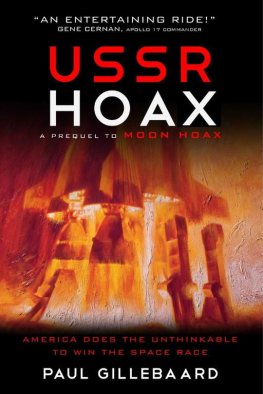
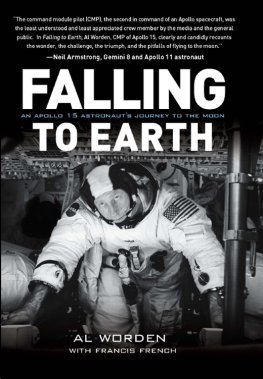
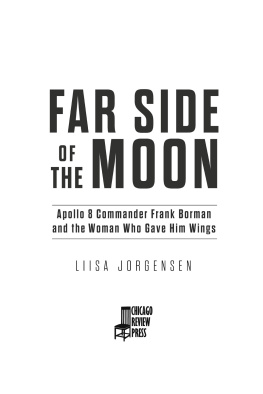
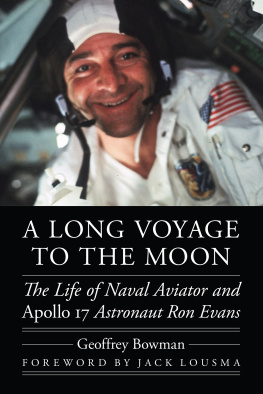
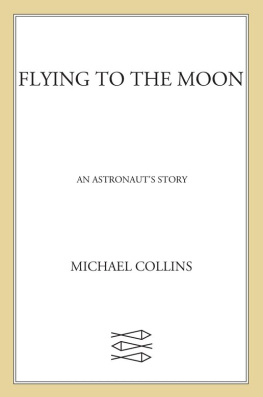
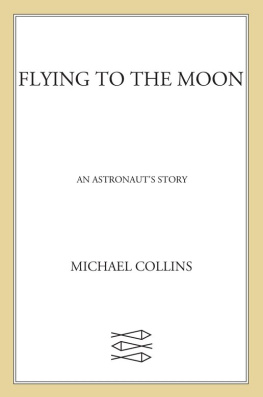
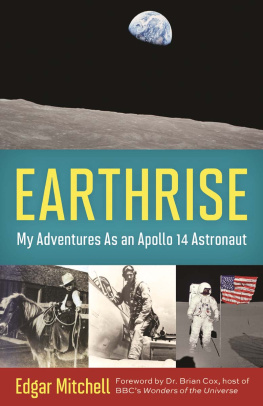
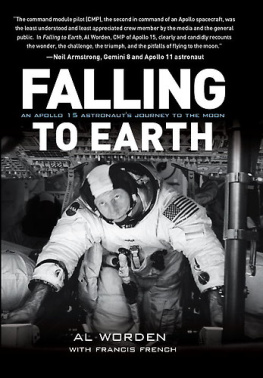
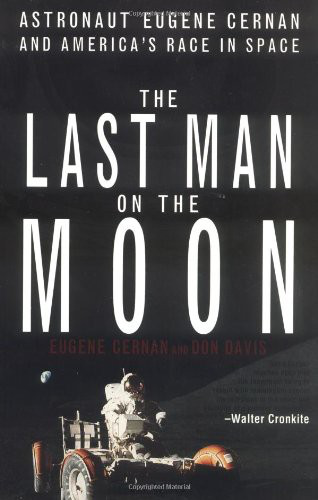

 New York
New York